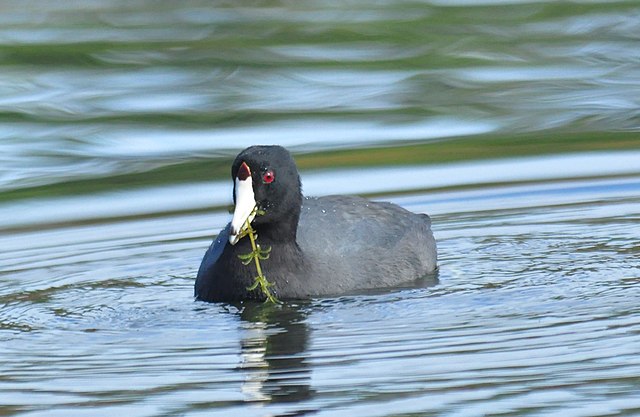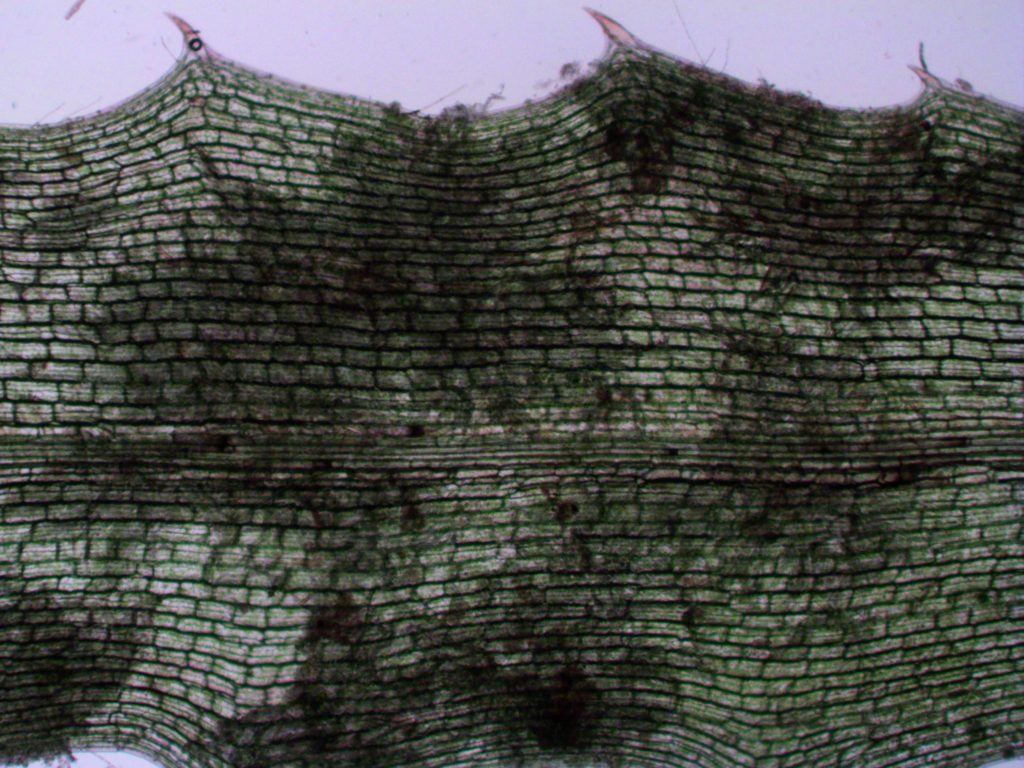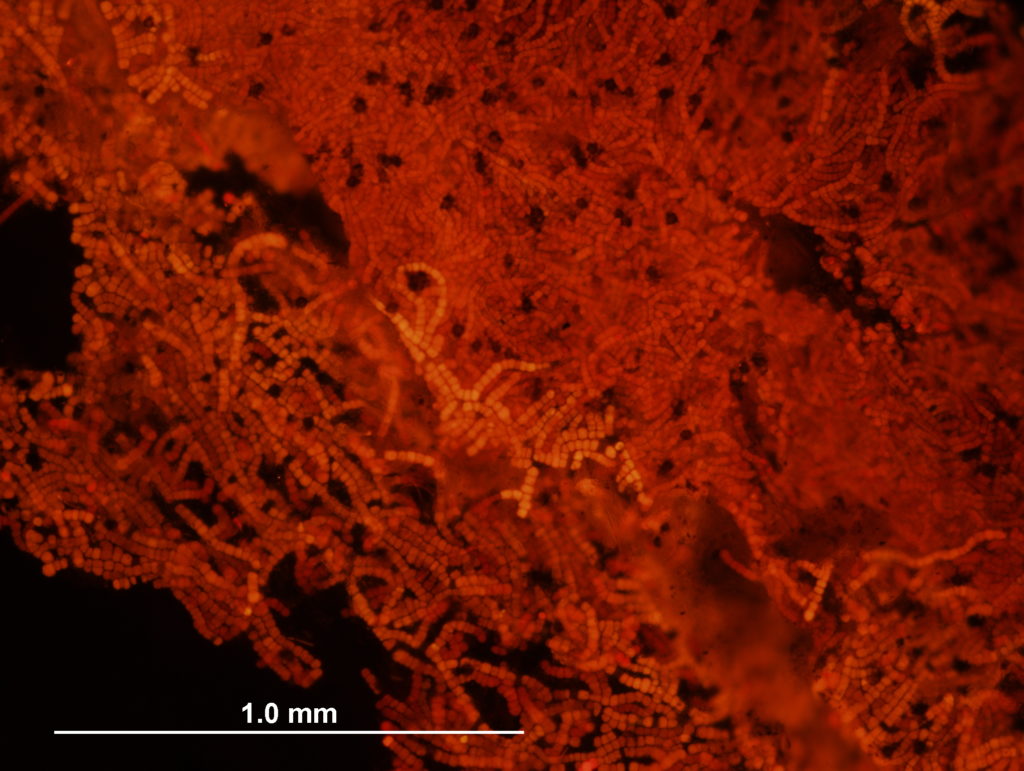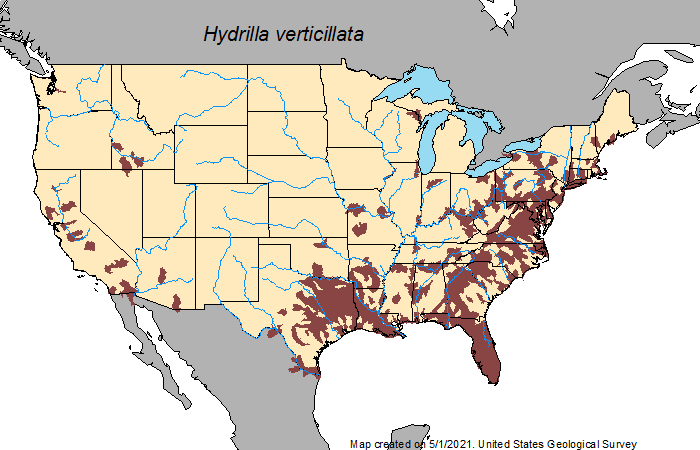Feature Image: Bald Eagle. Image from Wikimedia.
Article: Hunting the eagle killer: A cyanobacterial neurotoxin causes vacuolar myelinopathy
Authors: Steffen Breinlinger, Tabitha J. Phillips, Brigette N. Haram, Jan Mareš, José A Martínez, Pavel Hrouzek, Roman Sobotka, W. Matthew Henderson, Peter Schmieder, Susan M. Williams, James D. Lauderdale, H. Dayton Wilde, Wesley Gerrin, Andreja Kust, John W. Washington, Christoph Wagner, Benedikt Geier, Manuel Liebeke, Heike Enke, Timo H. J. Niedermeyer, Susan B. Wilde
Over the winter in 1994-1995, the largest undiagnosed mass mortality of bald eagles in the USA occurred at DeGray Lake in Arkansas. In total, 29 eagles were found dead and another 26 were found in the following winter. Other sick individuals were observed overflying perches or colliding with rock walls. Autopsies revealed open spaces called vacuolar lesions in the eagles’ brains and spinal cords. Since this incident, waterbirds with the same neurological disease have been discovered throughout the southeastern USA, which resulted in a severe loss of motor functions and ultimately death in American coots, ducks, geese, and various birds of prey. The new disease was coined Avian Vacuolar Myelinopathy (or AVM).
Since the first outbreaks in 1994-1995, the cause of AVM outbreaks has puzzled scientists. One commonality between all AVM outbreaks was that they were located on or near man-made water bodies; however, the analysis of the lakes and dead birds recovered from outbreak areas did not contain any chemicals or pathogens that were previously known to cause vacuolar lesions in mammals or birds. Moreover, coots and mallards released into AVM outbreak areas developed the disease, but housing healthy and sick birds together outside of AVM outbreak sites did not cause the disease in healthy birds. These results suggested that a novel environmental neurotoxin rather than a pathogen was the cause of the disease. Even then, the identity of the toxin eluded scientists for over 25 years. Now, through a feat of scientific detective work, AVM has been linked to a novel neurotoxin produced by a newly discovered species of cyanobacteria. How did researchers finally solve the mystery?
The first big clue for scientists was the seasonality of AVM outbreaks. Birds released at sites where AVM had been documented only got sick in late fall and winter while birds released to the same sites in the summer did not get sick. A second clue was that herbivorous waterfowl feeding on an invasive aquatic plant, Hydrilla verticillata, were the first to develop AVM, which could then spread up the food chain to birds of prey. Therefore, researchers suspected that the AVM-causing agent was accumulating in bird tissues after they ate Hydrilla plants. After inspecting the Hydrilla plants further, researchers eventually found that up to 95% of the leaves were colonized by a previously unidentified cyanobacterium, a bacterium that grows via oxygenic photosynthesis like plants. Because cyanobacteria are notorious for producing a suite of compounds that are potent neurotoxins, scientists suspected that the cyanobacterium was the cause of AVM. According to Dr. Susan Wilde at the University of Georgia, one of the two lead scientists of the study, the cyanobacterium was a plausible suspect because “it was really abundant, never had been described before, and it was growing on the [bird] food … because they (the coots) love Hydrilla.” Laboratory feeding experiments confirmed this suspicion when mallard ducks only developed AVM after being fed Hydrilla colonized by the cyanobacterium.

Based on these initial feeding experiments, Dr. Wilde hypothesized that ingestion of the invasive plant leaves that harbor the cyanobacterium – now named Aetokthonos hydrillicola, Greek for ”eagle killer residing on Hydrilla” – caused AVM in waterbirds due a neurotoxin produced by the cyanobacterium. However, because scientists failed to identify known cyanobacterial neurotoxins in AVM outbreak areas or in Aetokthonos hydrillicola, Dr. Wilde suspected that Aetokthonos was producing an unidentified neurotoxin. To investigate further, Dr. Wilde’s research group collected samples from a reservoir in Georgia and South Carolina to isolate the novel cyanobacteria strain for further trials.
Their first experiments involved feeding healthy chickens lab-grown strains of Aetokthonos isolated from Hydrilla leaves collected from AVM outbreak sites. Unexpectedly, the chickens that were fed lab-grown cyanobacteria did not develop symptoms of AVM. Something must have been different about the wild-harvested and the lab-grown Aetokthonos. The researchers hypothesized that the cyanobacterium only produces toxins when associated with Hydrilla plants and went back into the field to collect Hydrilla from confirmed AMV outbreak sites. Back in the lab, they analyzed the cyanobacteria colonies on the leaves with a new analytical chemistry technique called atmospheric-pressure matrix assisted laser desorption/ionization mass spectrometry imaging (AP-MALDI-MSI) with the help of Dr. Timo Niedermeyer from The University of Halle-Wittenberg in Germany.


According to Dr. Niedermeyer, the technique is called mass spectrometry imaging because it gives you images of surfaces, and “it is very similar to a digital photograph.” This technique yields individual pixels, but instead of recording color, as in the case of the camera, it records the mass of molecules on the sample surface. Knowing the accurate masses of the molecules in a pixel allowed Dr. Niedermeyer to determine the sum chemical formula of the molecule (i.e., the number and kinds of atoms in the molecule). Using this technique, the researchers identified the organic molecules present in cyanobacteria colonies growing on Hydrilla leaves at locations of AVM outbreaks.
To the researchers’ surprise, the novel technique revealed a bromine-containing compound in the cyanobacteria that was not a known chemical toxin or found in the lab-grown cultures. According to Dr. Niedermeyer, “Bromine-containing compounds are quite often found in marine organisms . . . but you don’t very often find them in freshwater organisms because bromine is very scarce in freshwater.” The discovery of the brominated compound was a sort of “eureka” moment for Drs. Niedermeyer and Wilde because synthetic bromine-containing compounds are known to cause brain lesions similar to the kind found in the birds with AVM. The presence of bromine atoms in the molecule could also explain why the laboratory cultures of Aetokthonos hydrillicola had no toxic effects in the previous feeding trials using cultured Aetokthonos — bromine was not supplied in the growth media that was used to grow the cyanobacterium in the lab. After the researchers fed bromine to their Aetokthonos hydrillicola cultures, they detected the same bromine-containing compound in their laboratory cultures.
With this new lead, the scientists could now look for the bromine-containing compound at AVM outbreak sites. Confirming its potential role in causing AVM, they only found the bromine-containing compound in lakes and in the tissues of dead coots during AVM outbreaks. The next missing link was to show that the novel compound had toxic effects in animals. The bromine-containing compound was isolated from lab-grown Aetokthonos cultures and fed to zebrafish and nematodes. At sublethal concentrations, the toxin halted reproduction in the nematodes and induced seizures in the zebrafish. Very low concentrations of the compound (10 nM) were enough to kill zebrafish. These results showed that the compound was indeed toxic, so the researchers fed the compound to healthy chickens to test if the brominated compound would cause AVM in birds. Chickens that were fed the newly discovered compound developed vacuoles in their white brain matter that are diagnostic of AVM, while the control group did not develop any vacuoles. After years of work, AVM could finally be linked to a specific-bromine containing toxin.
The novel toxin was eventually named aetokthonotoxin. However, aetokthonotoxin does not solely impact birds, as evidenced by the experiments with zebrafish. Previous feeding experiments with Hydrilla observed neuropathy and mortality in a wide variety of organisms, including amphibians, reptiles and fish. The wide array of organisms that are sickened by aetokthonotoxin along with the transfer of aetokthonotoxin up the food chain raises concerns for toxic effects on human populations, making the spread of Hydrilla a potential human health as well as environmental issue. “I just don’t know why we [mammals and humans] would get a pass,” said Dr. Wilde. “Larger fish like bass may end up with a body burden of aetokthonotoxin in the filets that people would actually consume.” The potential for aetokthonotoxin accumulation in the filets of popular game fish indicates that there are plausible yet unconfirmed aetokthonotoxin exposure routes for humans.

Despite the potential threat of aetokthonotoxin exposure in human populations, the impacts that aetokthonotoxin have on human health are still uncertain. Dr. Wilde noted that previous studies that had fed mammals Hydrilla containing Aetokthonos showed no toxic effects, but because the toxin was unidentified at the time, the scientists had no idea how much toxin was being ingested by their test subjects. While previous trials could not control the amount of toxin received by mammals, future studies can now examine aetokthonotoxin dose-response experiments in mice thanks to the discovery of the toxin. These future experiments will help determine if human populations are also at risk from aetokthonotoxin intoxication.

Identifying the cause of AVM is important for future efforts in controlling AVM outbreaks because scientists can now directly measure and monitor for aetokthonotoxin in freshwater reservoirs. Monitoring for aetokthonotoxin will be critical in assessing the risk of new AVM outbreaks, which will be particularly important in areas where invasive aquatic plants are established or spreading. Indeed, Aetokthonos does not grow solely on Hydrilla; it also grows on Eurasian watermilfoil (Myriophyllum spicatum), another invasive plant with a much wider distribution than Hydrilla, extending into northern US states. As Aetokthonos and the aquatic plants it grows on continue to spread northward, northern wildlife populations may be put at risk too.
Dr. Wilde and her research team are already trying to work with the US EPA and USGS to expand Aetokthonos monitoring programs to include more types of invasive plants and more locations where invasive aquatic plants have become established. However, there is a lot of uncertainty in how Aetokthonos may spread with aquatic plants and how toxic it will be. Although it is usually abundant in areas where Hydrilla occurs, Aetokthonos is not universally found on all Hydrilla plants, and the water quality parameters that support the growth of Aetokthonos are still largely unknown. Dr. Wilde’s group is currently working on identifying the water quality parameters that favor Aetokthonos growth to guide future aetokthonotoxin monitoring efforts.


Another factor that determines AVM risk is bromine availability for the cyanobacterium to produce aetokthonotoxin. Ironically, brominated compounds are used in herbicides (for example, diquat dibromide) that are used to control invasive plants. Thus, typical strategies to mitigate the spread of invasive plants might be contributing to bird mortalities by providing bromine for the production of aetokthonotoxin. To prevent this feedback in the future, Breinlinger et al. proposed that a re-evaluation of how to control invasive plants in areas containing Hydrilla is required. However, Dr. Niedermeyer is skeptical that the amounts of herbicide used are sufficient to massively increase the amount of bioavailable bromine in freshwater reservoirs and proposed that natural, geological sources, coal power plant scrubbers, and other manufacturing processes are a more likely source of bromine in AVM outbreak areas. “We don’t know yet [the main sources of bromine to AVM outbreak sites], maybe it’s a combination of [many sources],” cautioned Dr. Niedermeyer. However, even small inputs of bromine may be sufficient to fuel aetokthonotoxin production and AVM outbreaks because bromine can accumulate in aquatic plants. According to Dr. Wilde, “the Hydrilla are able to make [bromine concentrations] about 500 times as much as in the water column.” Further research on bromine biogeochemistry in AVM outbreak areas will be needed to determine sources of bromine and develop strategies to mitigate future AVM outbreaks.
The discovery of aetokthonotoxin has opened the door for future efforts to monitor and mitigate AVM outbreaks and protect US bird populations. Now that the compound that causes AVM has been identified, scientists and land and water managers can monitor for aetokthonotoxin as an indicator for potential AVM outbreaks in lakes and reservoirs across the US. Scientists can also now design experiments to assess the threat of aetokthonotoxin toxicity in human populations because we can now isolate and add the causative compound in controlled amounts. The identification of the toxin has also allowed scientists to focus future research on determining the sources of bromine that fuel aetokthonotoxin production and the water conditions that favor the growth of Aetokthonos hydrillicola, both of which are important information required for developing policies to prevent future AVM outbreaks. Much work is still required to implement the aforementioned monitoring efforts and studies, but we can now look forward to their future implementation. Overall, the study by Breinlinger et al. highlights the importance that a single chemical compound can have for human and ecosystem health, and how its identification can have a large impact on our societal ability to combat disease and protect wildlife populations.
Mysterious Eagle Deaths Linked to a Newly Discovered Cyanobacterial Toxin by Derek Smith is licensed under a Creative Commons Attribution-ShareAlike 4.0 International License.

